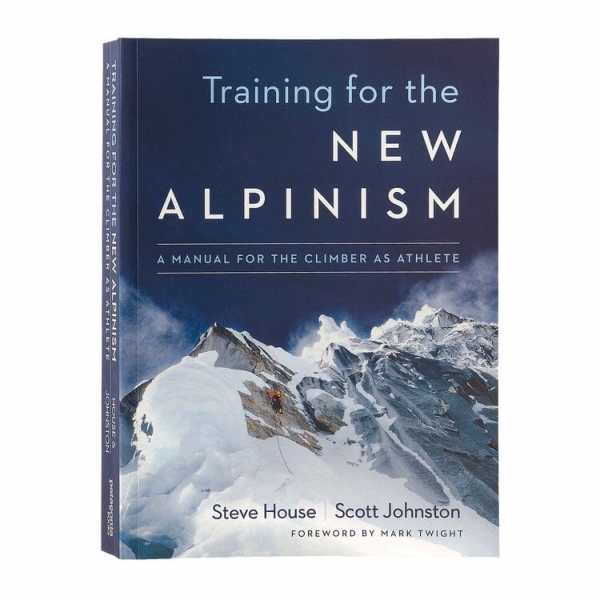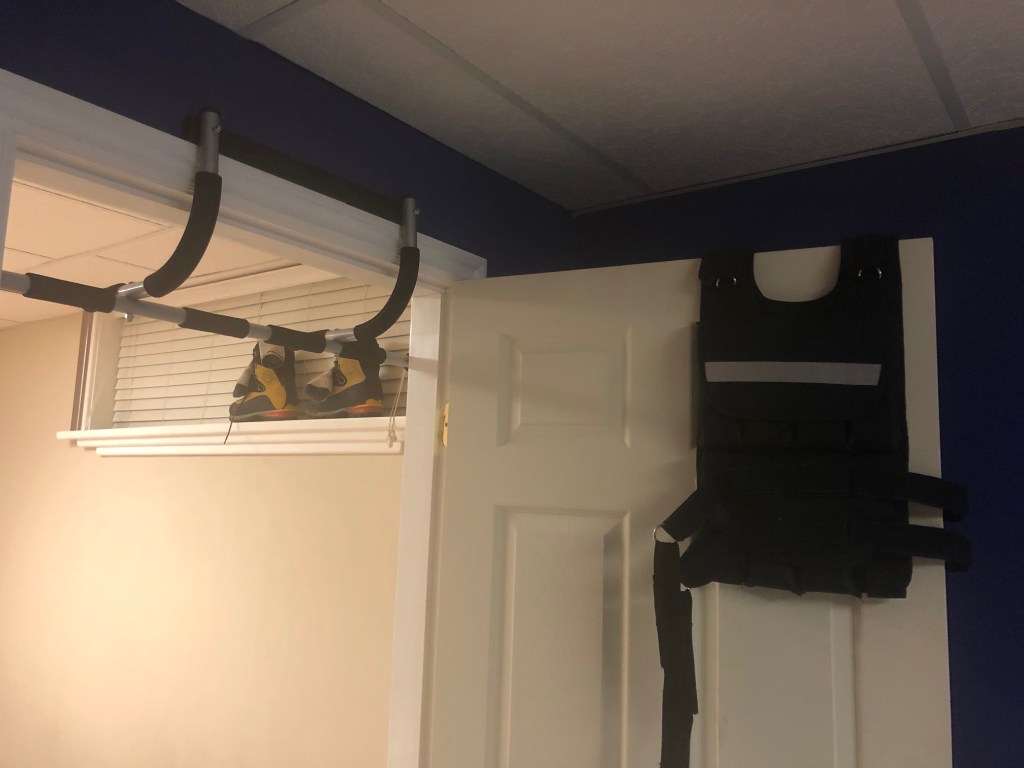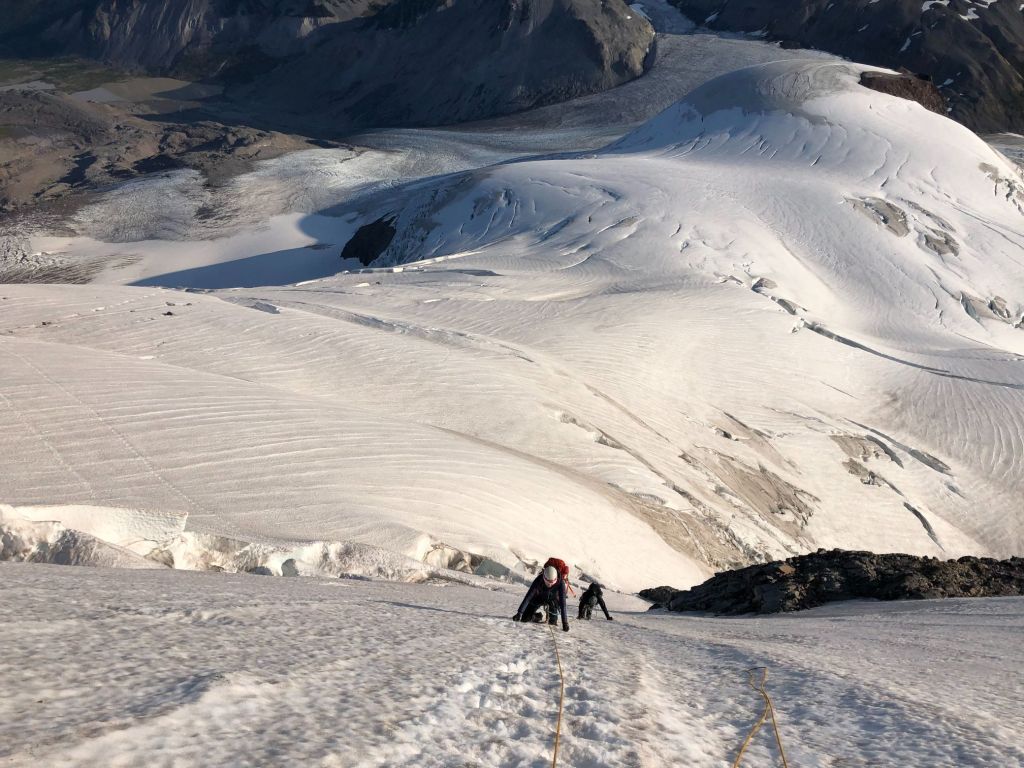My Mountaineering Training Experience
Thank you for allowing me to share my experience on your blog. I will do a quick introduction for your readers before diving into the topic.
My name is Shashi Shanbhag. I am originally from Ahmednagar, Maharashtra and moved to the US in 2008. After eight years in the US, I moved again in 2016, and now I live in Vancouver, British Columbia in Canada, with my wife and seven-year-old daughter. I started rock climbing in 2009 and over the years got into mountaineering, ice climbing and skiing. I am very much a recreational athlete on a journey to become the best version of myself.

By Shashi Shanbhag
The Need for Training
Although I have been climbing since I moved to the US, I didn’t follow a structured training plan. In 2014, I did an Alpine Ice Climbing Course with American Alpine Institute (AAI). The technical part was relatively easy, but long days on the mountain were challenging, and at times I struggled to keep up.

One of the guides at AAI recommended the book “Training for the New Alpinism” (TFTNA) to improve my fitness. For the next few years, I dabbled with this training approach, but it was only last year that I fully committed to training using the principles shared in the TFTNA book. In 2020, I completed about 415 hours of training and related activities covering 1180 km.

By no means am I an expert, but I will share what I have learned from the TFTNA book. I will hyperlink to articles on the Uphill Athlete website that I would recommend reading to understand the topic better.
Getting Started
At a very high level, aerobic capacity, strength and technical skills are the critical components of training for a mountaineer. There are obviously other aspects like mental training, nutrition, etc. I will just focus on aerobic capacity and strength training in this post.
Without a structured training background, improving aerobic capacity and strength was the priority for me. Only after having a strong fitness base would I be able to apply my technical skills more efficiently.
I first did an aerobic assessment to understand my aerobic threshold and set my training intensity zones. This ensured that I trained with the right intensity to improve aerobic capacity over the training period.

Next, I needed a training plan. I had tried to put together my own plan in a spreadsheet based on the TFTNA book, but it didn’t work for me. In 2020, I purchased the Uphill Athlete 24-Week Mountaineering Plan as it provided the structure and detailed notes to execute each workout. It made it easy to stick to the plan.
Another benefit of the mountaineering plan was that it incorporated the principles of a successful training plan – continuity, gradualness, and modulation.
After completing the aerobic assessment and purchasing the training plan, I was all set to start the training.
The 24-week training is split into three periods of eight weeks.
Transition Period
The transition period’s goal is to get familiar with training and prepare the body for the subsequent Base and Mountaineering Specific training. Each week in this phase included two core and general strength workouts, two aerobic workouts, one active recovery workout and one rest day. Here is a sample week in the transition period –

There are many variations of each core and general strength workout. Once I got comfortable with an exercise, I switched to the more challenging variation. The majority of my weekday aerobic sessions were on the treadmill.
Over the weekend, I would do laps on a trail with 450 steps. For longer workouts, I would head to a local mountain that offered a substantial elevation gain.
Base Period
In the base period, core and general strength training was replaced by max strength training. The plan had detailed instructions on recommended sets/reps, weights and progression over the training period. Here is what a training week looked like in the base period –

COVID restrictions were in effect, and my community center gym was closed. I could do my aerobic workout outdoors but ended up buying some gear for strength training at home. It was a basic setup with a Yoga mat, two 25 lb dumbbells, a step platform, a pull-up bar and a weight vest. I also had a foam roller and an elastic band that I used on rest days.


I just had one set of dumbbells at home, so I used a vest and increased weight as I progressed through the training. Towards the end of the base period, I was doing box-steps with two 25 lb dumbbells and a 30 lb vest.
As the gym was closed, I was doing weekday aerobic runs on a track. Over the weekend, I started doing 15-25 km hikes with 1500+ m elevation gain.


Initially, it would take 2-3 days to recover after one of these trips and miss some of the workouts. Gradually, the recovery time shortened, and I was doing my workouts as per the training plan.

Garibaldi NE Face (rated AD- Ice) was the best trip of the season. It was not easy, but after months of training, I was more confident in my ability to do it, and I enjoyed my time on the mountain.
Mountaineering Specific Training Period
The highlight of this phase was the Zone 3 Weighted Climb – Muscular Endurance workout. The instructions were to climb a steep hill with a heavy backpack, wherein you are limited by the fatigue in your legs and not by your breathing.

Training Summary
I started my training in January 2020 but had to restart the training cycle in April as I was sick in March. Later, I extended the program by a few weeks, and my first cycle of training came to an end around mid-November. I started a new training cycle in December last year.
Here is a quick summary of my training from 2020 –
Total Hours: 415
Total Distance: 1180 km
Average Elevation Gain/Week: 1236 m
These numbers are not impressive by any means, but it was a significant change from where I was in 2019. One of the key metrics for aerobic capacity (which is very specific to an individual) is the Aerobic Threshold (AeT). My AeT improved from 125 to about 150 by the end of the year.
What does this improvement translate to in the field? On a local mountain, in winter, it used to take me about two hours to get to the top while maintaining a heart rate below 125. Now, it takes me one hour and fifteen minutes to hike the same 3 km with 850 m elevation gain while keeping my heart rate below 150. Again, these numbers are average compared to my peers, but it’s an improvement in endurance for me.
With COVID-19 still around, nobody knows what 2021 will be like, and if I will do any climbs. But to be honest, it doesn’t matter. As Steve House mentioned in this article, I have come to “love the process” of training.
How can you get started?
If you want to get started with mountaineering training, here are few things to consider:
a) Set Goals: What are your goals? Are you getting ready for a mountaineering trip this year? or do you have a multi-year plan for a major expedition? Dream big, but be realistic based on how many hours you can dedicate to training.
“Most people overestimate what they can do in one year and underestimate what they can do in ten years.”
– Bill Gates, as seen on Uphill Athlete Website
b) Evaluate Gaps: What do you need to meet your goals? What is your weakest link? If you are an endurance athlete, you might already have the base fitness and need to work on mountaineering specific training and technical skills. For someone with no training background might have to start from scratch and build the aerobic base. Talk to experienced mountaineers and get their feedback if you need help understanding what it takes to climb the mountain you have in mind.
c) Plan: Once you have identified things you need to work on based on your goals, put together a plan. You can put together a plan based on the book “Training for the New Alpinism” or any other resource. If you are like me, you might want a more structured training plan that is easy to follow.
d) Commit: A plan is worthless if you fail to execute it. Without continuity, gradualness and modulation, you are not training but just doing a series of exercises. Exercises will get you fit, but it will not be as effective as training. If you are ready to take this one step further, I will encourage you to read this article on Commitment vs. Discipline.
“You can’t coach desire, and no matter how fancy your training plan or how high your stated goals are, it comes down to getting out the door and doing the work day after day.”
– Steve House, Training for the New Alpinism
I hope I have provided you enough information to at least get started. I wish you the very best in your training. You can read about my climbing and other trips here.
We hold the decades of exposure in Himalaya and Popular climbing destinations across the continents.
Our skills as competence professionalism as instructors, armed forces veterans, and mountaineers sets us apart from the rest.
Our teams has trained thousands of mountaineering enthusiasts. Our knowledge and experience gives us an edge as mountaineers.
